Well pipe: variations and selection
An important component of comfortable living in a private house is an autonomous water supply. Arrangement of the water source and ensuring its supply to consumers requires the solution of many different issues, one of which is the choice of the casing used to prevent shedding of the soil, as well as the installation of a water-lifting pipe that provides water.

Pipe selection
Material selection
When buying, first of all, pay attention primarily to:
- durability,
- strength,
- corrosion resistance
- immunity to shock loads.
Of course, for many the price is the main factor, but one should not neglect the listed properties in order to save.
Let's figure out what to use pipes for wells.
- Plastic Products (PVC). For the arrangement of the well used steel more often. But, as many years of experience have shown, plastic pipes are distinguished by reliability, ease, ease of installation, and the absence of a negative impact on water.

- PVC and HDPE pipes for wells are characterized by low cost, but they can only be used in wells with a depth of no more than three meters. At the same time, no requirements are made to the diameter.
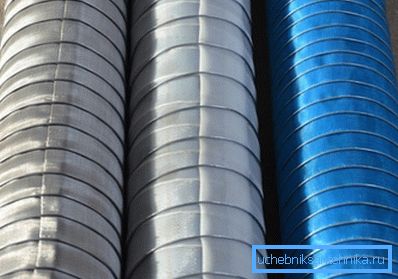
- NPVH products from non-plasticized polyvinyl chloride differ in the best reliability and rigidity which almost does not concede rigidity of steel. Such pipes are more expensive, but this is due to good performance.
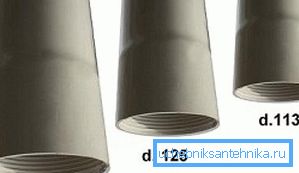
- Steel is a classic option for the manufacture of the column. The main advantage of such structures is the possibility of their use in mobile soils, while the steel pipe will not lose its integrity.
The lack of material is susceptibility to corrosion. However, it is possible to cope with the rust occurring in water and preserve the taste of the liquid by installing special filters. The main reason for refusing to purchase such products is their high cost.
- Asbestos-cement structures widely used for over 60 years. They have high strength and reliability.
Note! However, such pipes for drilling wells emit harmful substances in the water, because their safety for life has recently been questioned. Water, interacting with zinc, which is part of the material, forms a dangerous compound. In addition, chrysotile fibers adversely affect the state of water, the use of which can lead to the development of cancer.
To this is added the complexity of installation, which is why more and more people are abandoning this option.

- Water-lifting pipes for metal-plastic wells are distinguished by their ability to bend, so that you can easily change the configuration of the water supply system. This is especially important when installing temporary structures, replacing them, or when connecting new equipment.

- Copper pipes are the most prestigious, but at the same time very expensive products.

- The greatest distribution found polypropylene, presented in the photo. The advantage of using it is the ability to quickly connect the pipes with your own hands and get structures of any length on the spot.
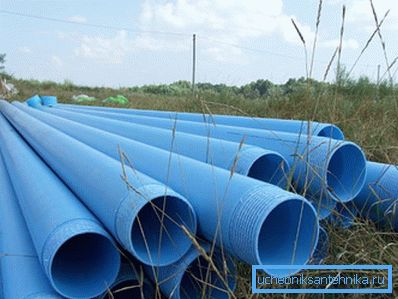
Note! It should be immediately noted that the well from sewer pipes is not the best option, since such products are not designed to provide drinking water for the house. It is allowed to use them only for technical water supply, for example, irrigation of agricultural crops.
Choice of pipe diameter
The performance of a water source depends largely on its size. The bigger it is, the more water will be supplied. To reduce drilling costs, it is necessary to calculate the minimum pipe diameter for a well that can satisfy the need for water (see also the column, slurry and casing for wells).
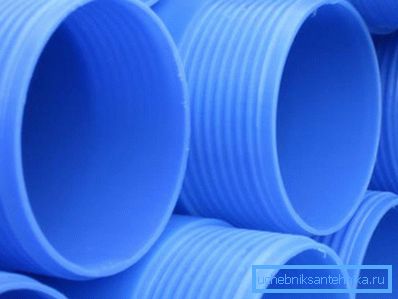
Tip! In order to make calculations, it is first necessary to determine the peak water flow. Approximate consumption for a country house is 0.7 cubic meters per hour. We get that with the simultaneous use of several consumers at once, the consumption will be 2.5-3 cubic meters per hour, for a two-story house these parameters need to be doubled.
Determine what diameter pipe to choose for the well. When calculating it, the dimensions of the submersible pump must be taken into account.
A three-inch pump (75 mm) is suitable for a one-story house. If the water flow reaches 8 cubic meters per hour, then you will need to use a four-inch device (102 mm).

When drilling a well for water, the pipes for a well are calculated as follows: 75 mm + 4 mm (gap between the pump and the walls) + 8 mm (wall thickness) = 87 mm. The standard range offers sizes of 89, 109 and 114 mm. This is the most economical way.
How to independently remove the pipe
Special care well does not require. It is only important to regularly flush it from accumulated precipitation. The impact of external factors may adversely affect the state of the column, especially metal.
Over time, they form rust, cracks and in some cases ruptures. Therefore, in this case, you need to know how to pull the pipe out of the well in order to put a new one in its place.
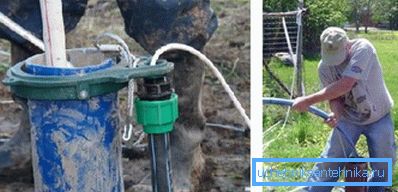
The easiest way is to install a pipe of smaller diameter in the old structure. If the dimensions do not allow to perform this action, then carry out the replacement of the column.
The method of extraction depends on the degree of destruction of the structure: it is taken out either in whole or in parts. The following instruction will help to figure out how to get the pipe from the well.
Depending on the degree of damage to the column, it can be removed by one of these methods:
- stretching the pipe and its breakage;
- flushing and parallel pacing of the pipe;
- unscrewing the design.

- Pull up the column with a stretch using a jack or pulley system. If you decide to resort to this method, then you need to ensure that the tower has sufficient capacity.
For these purposes, the best option would be a hydraulic jack. Products that are pulled out in this way are unsuitable for reuse.
The top edge is tensioned until the column breaks. This part is pulled out of the well.
Then, using a special tool, hook the edge of the pipe and pull it out again until the structure breaks. Continue until the entire product has been removed.
This method should not be resorted to if:
- the well is curved or tilted, then the friction forces will impede the work;
- A large diameter pipe rupture occurred at depth, here the method of extraction is used in parts.
- The method of washing the walls is less labor intensive. The pressure line of the pump from the flushing equipment is attached to the edge of the pipe. Then, turning on the minimum pressure, water is supplied.
After installing the circulation pressure increase. As a result, the pipes are strutting around, which allows them to be pulled out of the well.
With a large diameter of the column, installation is carried out inside the washing elements, washing the structure from the inside. When the bottom of the flush column drops three meters below the pipe shoe, it will go back to flush.
Continue flushing until all of the sand plug around the column has been removed. When this well paced and rotated alternately.
Conclusion
Well organization involves solving many problems, one of which is the choice of the optimal size of the casing and suitable material (see also the article Casing Well) - how to select, install and dismantle it.
If you undertake to solve this problem on your own, you probably will need the photos and videos in this article.